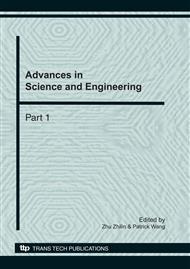p.577
p.584
p.591
p.599
p.604
p.610
p.619
p.625
p.631
Gas Mixture Recognition Method with New Hybrid Architecture
Abstract:
The quantification accuracy of the gas mixture recognizing is greatly dependent on the gas sensor array signal processing method. The paper reports the new hybrid architecture with two main stages for gas mixture recognition. The first stage combine the principal component analysis (PCA) and back propagation neural network (BPNN) to qualitative identify the gas mixture, and the second stage composed of the independent component analysis (ICA) and BP sub networks to quantify the gas concentrations. The hybrid architecture and three other commonly used methods of PCA+BPNN, ICA+BPNN, and ICA+BP sub networks were respectively applied in binary gas mixture quantification based on the same gas sensor array, and results show that the hybrid architecture has the lowest quantitative recognition errors and fast converge speed comparing with the other methods.
Info:
Periodical:
Pages:
604-609
Citation:
Online since:
November 2010
Authors:
Price:
Сopyright:
© 2011 Trans Tech Publications Ltd. All Rights Reserved
Share:
Citation:


